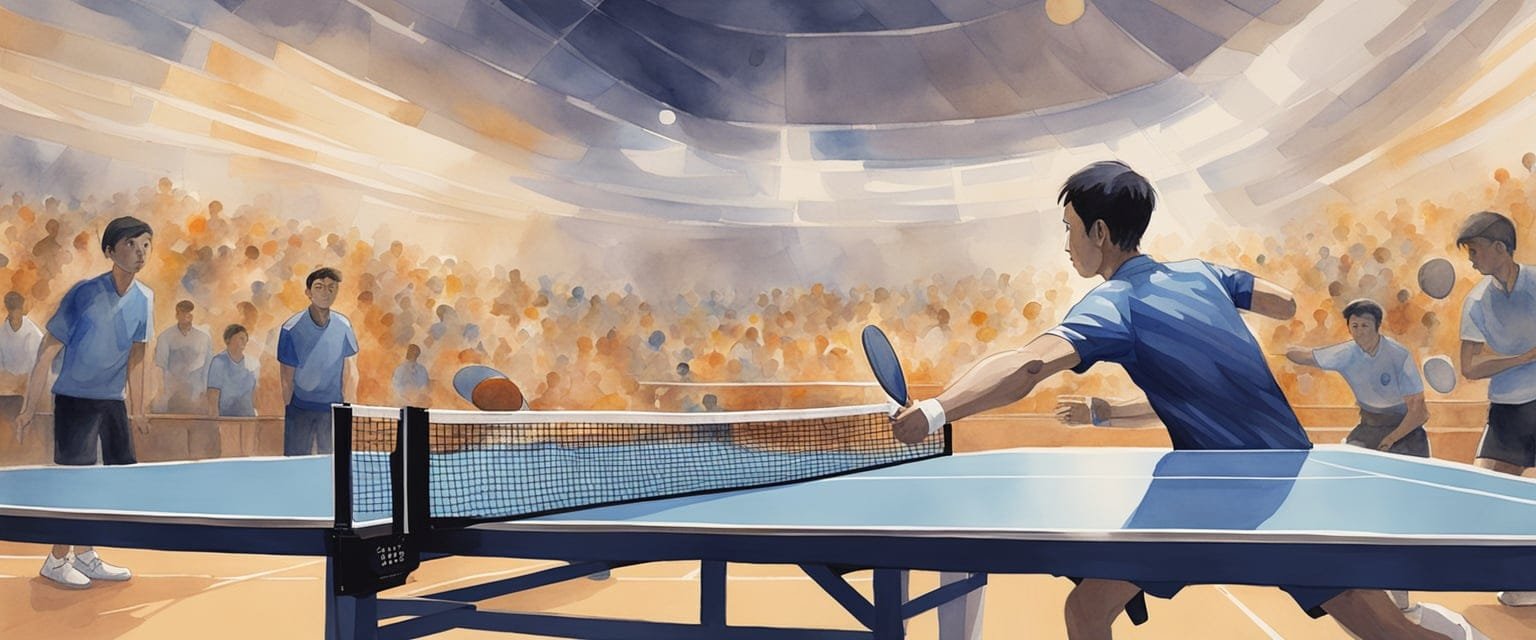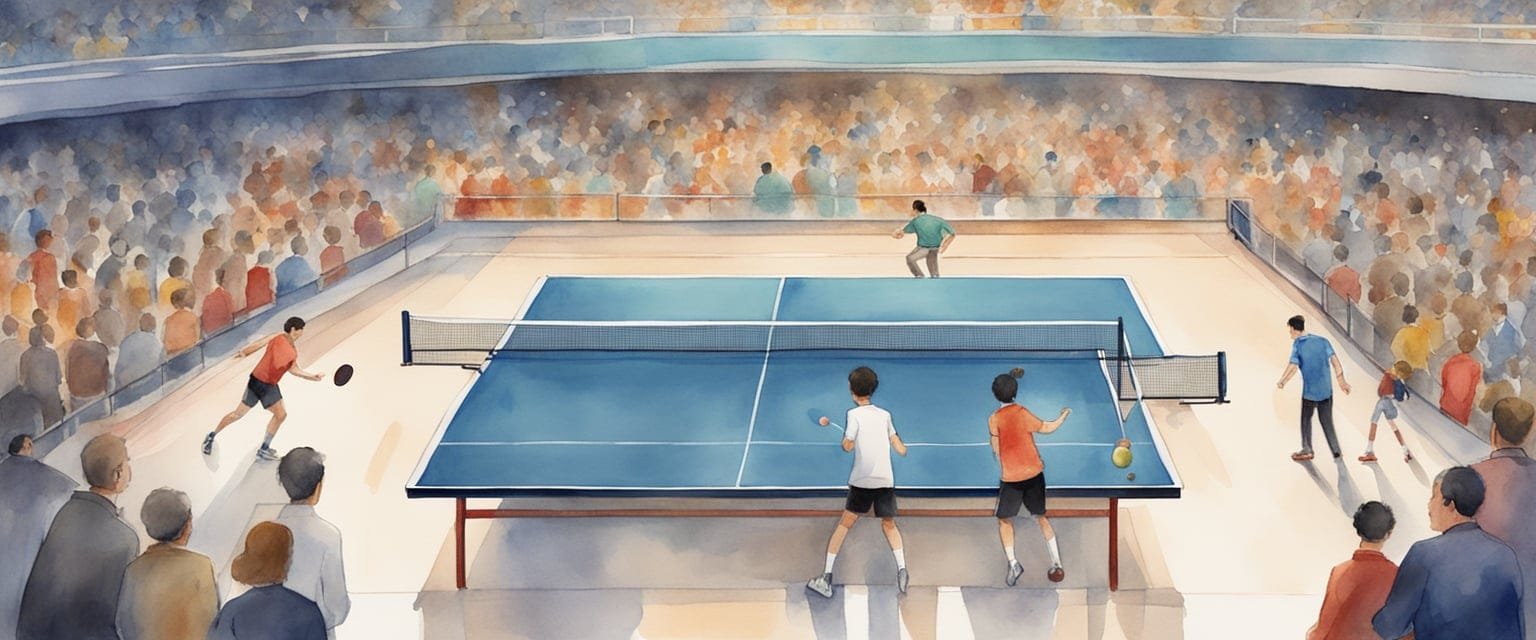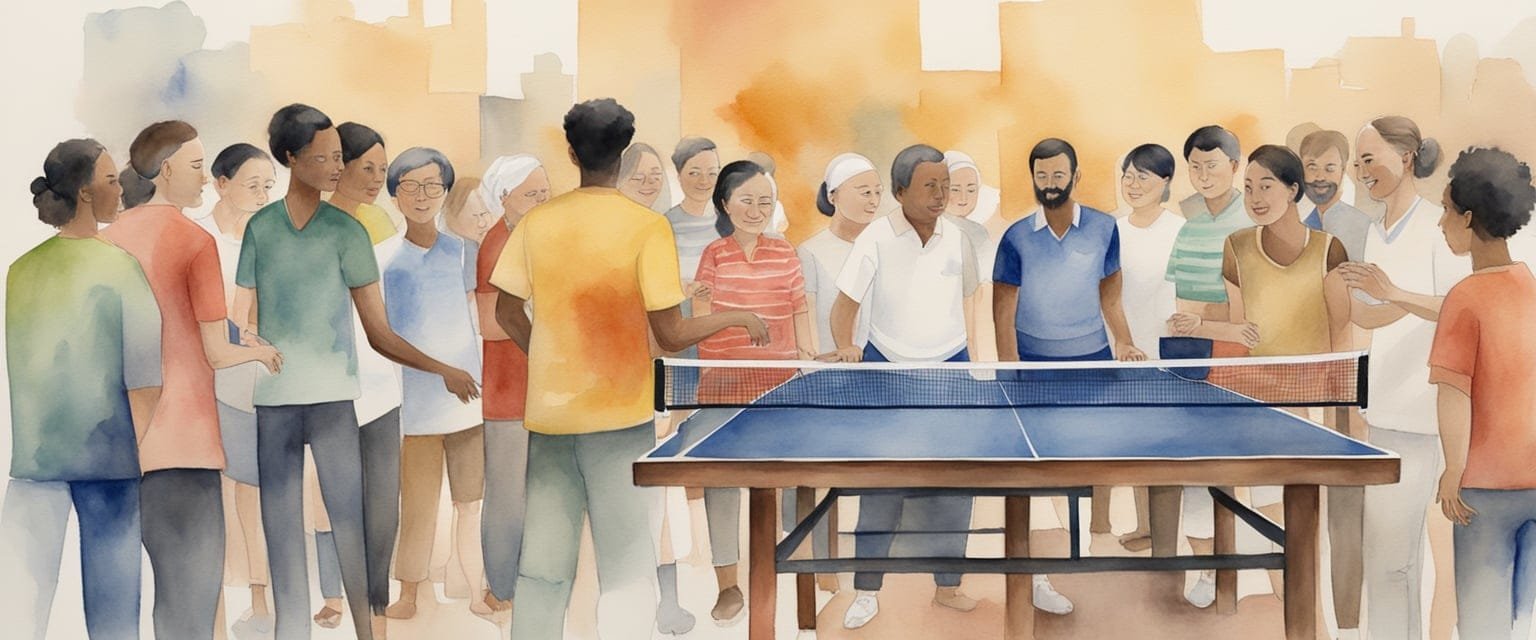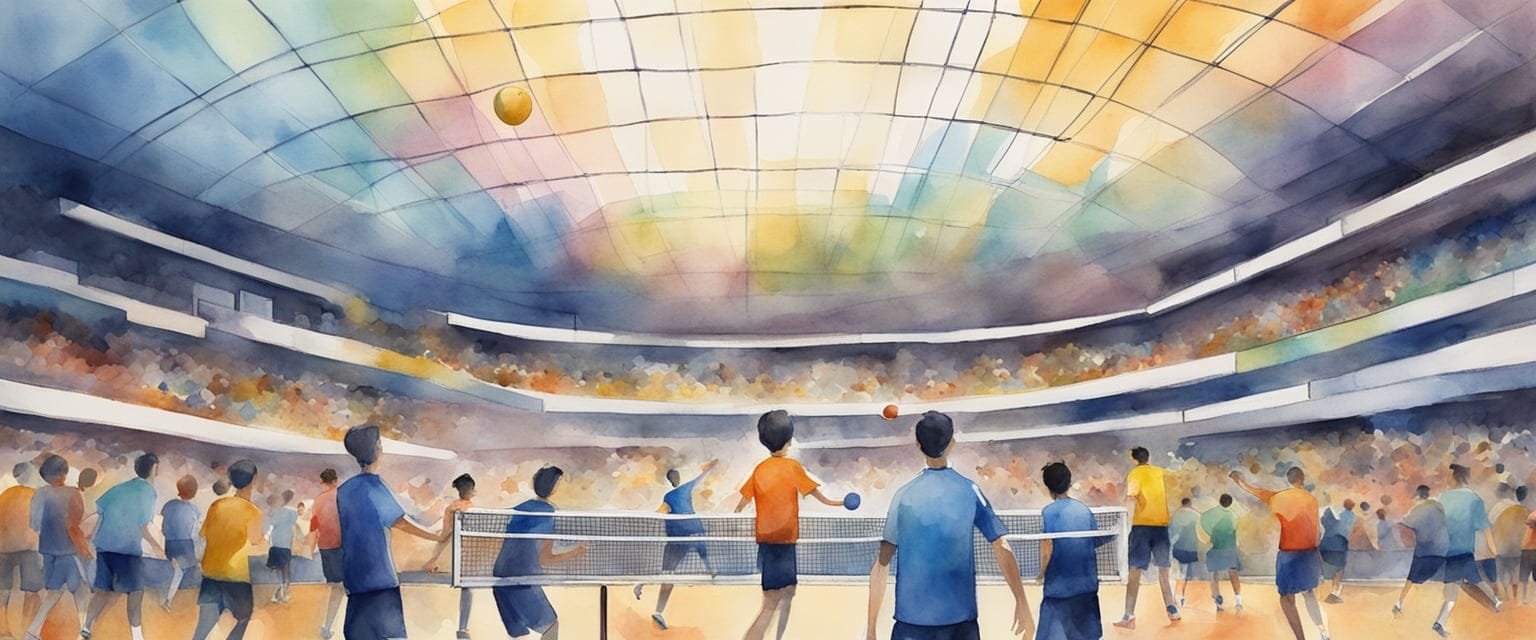Table tennis, often called ping pong, is a thrilling and fast-paced sport that has captivated millions worldwide. In this ultimate guide to Olympic Table Tennis, you will discover everything from the game’s history to its modern-day significance at the Olympics. Whether you are a seasoned player or a curious newcomer, this guide will help you understand what makes table tennis a unique and exciting sport.

I’ve always been fascinated by how table tennis has evolved over the years, becoming a key event at the Olympics. From the basics of how the game is played to the intricacies of competition structure, this guide aims to provide a comprehensive overview that can enhance your knowledge and appreciation of the sport. Engaging with table tennis can not only improve your skills but also connect you to a vibrant community of players and fans.
Join me as we dive into the world of Olympic Table Tennis and explore its rich history, competitive spirit, and the joy it brings to players everywhere. I promise you’ll come away with a deeper understanding and a greater appreciation for this remarkable game.
Key Takeaways
- Learn about the rich history and evolution of table tennis as an Olympic sport.
- Understand the competition structure and rules that shape thrilling matches.
- Discover tips for mastering the game and enhancing recreational play.
History and Evolution of Table Tennis
Table tennis has a rich history that spans from its playful beginnings to its prestigious status as an Olympic sport. In this section, I will explore how the game started, its journey to the Olympics, and the key figures who shaped its evolution.
Origins and Early Development
Table tennis began in the late 19th century as a fun parlor game in England. Players used makeshift equipment, like books for paddles and a champagne cork for the ball. It was initially called “whiff-whaff.”
By the 1900s, the game had gained popularity, and formal rules began to emerge. The International Table Tennis Federation (ITTF) was established in 1926, leading to standardized rules and official competitions.
This growth fueled international interest, with the first World Championships held in London in 1926. As a result, more countries started to form their own associations.
Table Tennis at the Olympics
Table tennis made its Olympic debut at the Seoul Games in 1988, featuring both men’s and women’s singles and doubles events. In 2020, the Tokyo Olympics introduced mixed doubles, adding more excitement to the competition.
China quickly emerged as a dominant force in Olympic table tennis, winning numerous medals since its introduction. South Korea also became a strong competitor, producing talented players who have excelled on the world stage.
The presence of table tennis at the Olympics has elevated the sport’s profile globally and has significantly increased participation. Each Summer Olympics showcases thrilling matches that captivate fans.
Key Historical Figures and Moments
Several players have made a significant impact on the history of table tennis. For instance, Deng Yaping from China, a dominant player in the 1990s, won four Olympic gold medals.
Another notable figure is Jan-Ove Waldner from Sweden, often called the “Mozart of Table Tennis.” His skill and creativity revolutionized the game.
Historic matches have also defined the sport’s evolution. The intense rivalry between China and Sweden during the 1990s created unforgettable moments for fans around the globe.
These players and matches have not only brought attention to table tennis but also inspired future generations of athletes. Their legacies continue to shape the sport today.
Understanding the Game

In this section, I’ll explain the key elements of Olympic table tennis, including its rules, equipment, and essential playing techniques. These basics will help you appreciate the game better and might even inspire you to give it a try.
Basic Rules and Scoring
The rules of table tennis are straightforward. A player wins a game by being the first to reach 11 points, with a player needing a two-point lead if the score is tied at 10-10. Each player serves twice in a row, alternating after that.
Points are scored when the opponent fails to return the ball properly. Common mistakes include letting the ball go out or not striking it before it bounces twice. Understanding these rules is vital for enjoying the game.
Table Tennis Equipment
The essential equipment for table tennis includes the paddle and ball. The paddle, sometimes called a racket, has a rubber surface that helps with ball control. Players often customize their paddles to suit their playing style.
The ball is lightweight and made of plastic, typically weighing 2.7 grams. The table is rectangular, measuring 9 feet long and 5 feet wide, with a net assembly in the middle. This setup is crucial for a fair and competitive match.
Playing Techniques and Shots
There are several important shots in table tennis that every player should master. The serve initiates each point and can be varied to catch opponents off guard. Players often use spins like topspin and backspin to make the ball more challenging to return.
Other key shots include the smash, which is a powerful downward strike, and the lob, which sends the ball high to push opponents back. I find practicing these techniques regularly helps improve my game and strategy.
Competition Structure

In this section, I’ll explore how Olympic Table Tennis is organized, focusing on different formats and how they compare to other major tournaments. Understanding this can enhance appreciation for the skill and strategy involved in the sport.
The Olympic Format
The Olympic Table Tennis competition features multiple events, including Men’s Singles, Women’s Singles, Men’s Team, and Women’s Team. Each event is structured to ensure fair matches and exciting gameplay.
In singles events, 70 players compete, while team events feature 16 nations. Matches are typically best of seven games, which means a player must win four games to secure victory. This format keeps the stakes high and the spectators engaged.
Players earn their spots through rigorous qualifications set by the International Table Tennis Federation (ITTF). The tournament rounds progress from preliminaries to knockout stages, culminating in the finals where champions are crowned. You can find more insights into this format in detail here.
Other Major Table Tennis Tournaments
Beyond the Olympics, many other competitions shape the world of table tennis. Notable tournaments include the ITTF World Championship and the World Cup. These events also feature both singles and team formats, attracting top players from around the globe.
The structure varies, but typically, players face each other in elimination rounds leading to finals. The ranking system used in these tournaments affects players’ seedings and qualifications for the Olympics, demonstrating how interconnected these competitions are.
The methods and rules established by the ITTF influence these formats, ensuring consistency in gameplay and scoring. For example, matches in these events usually follow a best of five or best of seven games format. To learn more about the rules and structure, check this guide here.
Mastering Table Tennis
To master table tennis, I believe it’s essential to focus on skill development and strategic thinking. Physical and mental training also play a big role in becoming a better player. Here’s how I approach these important aspects.
Developing Skills and Strategy
When I practice, I pay close attention to both my offensive and defensive skills. Offensive skills include strong forehands and backhands, while defensive strategies help me return challenging shots. I find that mastering spins, like topspin and backspin, can confuse opponents and help me score points.
I also use drills to improve my footwork. Quick movement allows me to position myself better for shots. Learning different strategies for various match situations has enhanced my game. For example, knowing when to play aggressively versus when to defend can change the outcome. Watching professional players and their techniques through resources like Racket Insight has greatly inspired my training.
Physical and Mental Training
Physical conditioning is crucial in my training routine. I include exercises that enhance my speed, agility, and endurance. Regular cardiovascular workouts help me stay energetic during matches, while strength training improves my shot power. Stretching and flexibility exercises prevent injuries and keep me nimble.
Mental training is just as important. I practice visualization techniques to imagine myself succeeding in matches. This boosts my confidence and focus. Sportsmanship is also key. Maintaining a positive attitude, regardless of winning or losing, helps me stay motivated and enjoy the game more.
By combining both physical and mental training, I feel better prepared for any match that comes my way.
Modern Day Table Tennis
Table tennis has evolved significantly over the years, becoming faster and more competitive. Advances in technology have transformed the game, changing everything from equipment to player training. I find it exciting to see how these changes impact the sport.
Technological Advancements
One major change in modern table tennis is the shift from celluloid to plastic balls. This shift started around 2014 and aimed to improve safety and sustainability. Plastic balls are more durable and offer different playing characteristics.
Equipment innovation has also played a significant role. Rackets have become lighter and more powerful, incorporating advanced materials like carbon fiber. This allows players to generate quicker spins and more precise shots.
Training technology has also become vital. Coaches and athletes use video analysis and performance tracking tools to refine techniques. These innovations help players analyze their game and improve their skills.
Prominent Athletes in the Sport
In the realm of professional athletes, I admire many who have made their mark in table tennis. Ma Long from China is a standout, known for his incredible skill and multiple gold medals in major championships. His powerful playing style has inspired countless fans and young players.
Another athlete I admire is Ding Ning, who has dominated women’s table tennis with her sharp tactics and quick reflexes. Her balance of speed and control makes her a formidable opponent.
Other notable athletes include Kenta Matsudaira and Timo Boll, each bringing unique styles and achievements to the sport. Their contributions have helped elevate table tennis on the global stage, inspiring many to take up the game.
Preparing for Recreational Play
When I think about getting ready for recreational table tennis, two main areas come to mind: setting up my space and picking the right gear. Both are important for enjoying the game and having fun with friends.
Setting Up Your Space
I start by finding a good space for playing. It’s best to pick a flat, even surface. A garage, basement, or any large room can work well. If I’m outdoors, a smooth table is a must.
Next, I need enough room around the table. I like to have at least 5 feet of space on each side. This gives me room to move and hit the ball without hitting furniture.
I also make sure the lighting is good. Natural light is nice, but I use bright bulbs for indoor play. It helps me see the ball better, which is key for ping-pong rallies.
Choosing the Right Gear
Choosing the right gear is exciting. I start with paddles, as they affect my game. I prefer paddles that offer a good grip and control. There are many options available. Some are designed for speed, while others focus on spin.
Next, I look at the balls. I usually play with size 40mm plastic balls, which are standard for tournaments. These balls are durable and great for casual play too.
Finally, I think about my attire. Wearing comfortable clothes helps me play better. I like breathable fabrics that allow me to move freely. Having the right gear makes my recreational games more enjoyable and keeps me focused on the fun.
Keeping Score and Umpiring
Understanding how to keep score and the role of umpires is essential in Olympic table tennis. This helps ensure fair play and that all players are aware of the rules during a match. Here’s what I found about these important aspects.
Detailed Scoring System
In Olympic table tennis, a player needs to score 11 points to win a game, but they must lead by at least two points if the score reaches 10-10. Points can be scored whether you are the server or the receiver.
You score a point when your opponent:
- Fails to make a good service.
- Fails to return the ball properly.
- Allows the ball to bounce twice on their side.
Players serve twice in a row, and the service must go diagonally to the opponent’s side of the table. This makes it a crucial part of the game. Understanding these rules not only helps me keep track of the game, but also ensures fair play.
Role and Responsibilities of an Umpire
The umpire plays a vital role in table tennis matches. They ensure that all players follow the laws of table tennis and that the game runs smoothly. They have the authority to make decisions about points scored, service legality, and other rules.
Key responsibilities include:
- Monitoring the players to ensure they follow the rules.
- Calling faults if a server does not serve within regulations.
- Keeping track of scores and ensuring accuracy.
Umpires also resolve disputes and provide guidance on rules when needed. A good umpire helps create a fair and enjoyable atmosphere for everyone involved. Their knowledge of the game is crucial.
Cultural Impact of Table Tennis

Table tennis has influenced culture in various ways. Its presence in media and film, along with the development of clubs and communities, showcases how this sport fosters connection and excitement worldwide.
Table Tennis in Media and Film
Table tennis has made its mark in both media and film. Popular movies often feature the sport, highlighting its fast pace and competitive nature. Films like “Ping Pong” and “The King’s Speech” showcase players’ dedication and the thrill of competition.
In television, table tennis events attract millions of viewers. Major tournaments, such as the Olympics, present thrilling matches that become memorable moments. I enjoy watching these events, as they highlight incredible skill.
Ping-pong has even influenced music and art. Songs and artworks reflect its energy and vibrancy. This sport never fails to inspire creativity in various forms, keeping us engaged and entertained.
Famous Clubs and Communities
Table tennis has built vibrant communities around the world. Many cities have established clubs, welcoming players of all ages and skill levels. For instance, I’ve seen local clubs foster friendships and support among members.
Internationally, clubs often participate in tournaments, creating strong bonds through competition. These events celebrate talent and sportsmanship, allowing players to connect beyond their borders.
Furthermore, grassroots programs promote table tennis in schools and neighborhoods. I find these initiatives vital in spreading interest and encouraging young players to pursue their passion. Overall, the sense of community within table tennis continues to thrive, uniting enthusiasts around shared love for the sport.
Table Tennis Beyond the Game
Table tennis is not just a fun activity. It offers valuable benefits that extend into various aspects of life, including education, social interaction, and even physical health. I enjoy exploring these elements that make table tennis more than just a game.
Educational and Social Benefits
Playing table tennis can enhance physical fitness while also sharpening mental skills. It improves hand-eye coordination, reflexes, and concentration, which are essential in other areas of life, such as academics.
Moreover, I see table tennis as a great social sport. Whether I am playing at home with family during a holiday like Thanksgiving or competing in a community setting, it fosters relationships. Engaging in friendly matches can strengthen bonds and encourage teamwork. As I share laughs and excitement during games, I’m not just improving my skills; I’m also building lasting memories.
Incorporating Table Tennis into Your Lifestyle
Bringing table tennis into my daily routine is easier than I thought. I use simple setups, like having a portable table or even a small device for training. Playing regularly helps me stay active and fit.
I often invite friends or family over for a quick match. It’s a fun way to mix exercise with socializing. I find great joy in balancing my Game time with everyday tasks, making room for laughter and friendship as I enjoy the sport. By incorporating it into my lifestyle, I not only stay fit but also create enriching experiences that bring us closer together.
Frequently Asked Questions

I often get questions about Olympic table tennis, and I’m happy to help clear things up. Here are some common topics that come up regarding the game’s rules, strategies, and history.
How does Olympic table tennis scoring work?
In Olympic table tennis, a player needs to score 11 points to win a game. Each player serves twice in a row. If the score reaches 10-10, a player must win by two points.
Can you explain the serve rules for singles in table tennis?
In singles, the serve must start behind the end line and above the level of the playing surface. The ball must bounce on the server’s side first and then the opponent’s side. Players alternate serves every two points.
What are the key strategies to winning at table tennis?
One strategy is to control the pace of the game by varying your shots. Placing the ball to different areas of the table can make it harder for opponents. Also, anticipating your opponent’s moves can give you an edge.
How many sets are played in Olympic table tennis matches?
In Olympic matches, players compete in the best of five or seven sets. Winning three or four sets, depending on the match format, secures the overall victory.
What’s the history of table tennis in the Olympic Games?
Table tennis became an Olympic sport in 1988. Initially included as a demonstration sport, it gained full Olympic status. Since then, it has grown in popularity and has a rich competitive history.
Could you list the essential rules that every table tennis player should know?
Every player should know that the ball must be thrown vertically during a serve. Also, if the ball hits the net on a serve and goes over, it’s replayed. Understanding the scoring and serving rotation is crucial for play.

